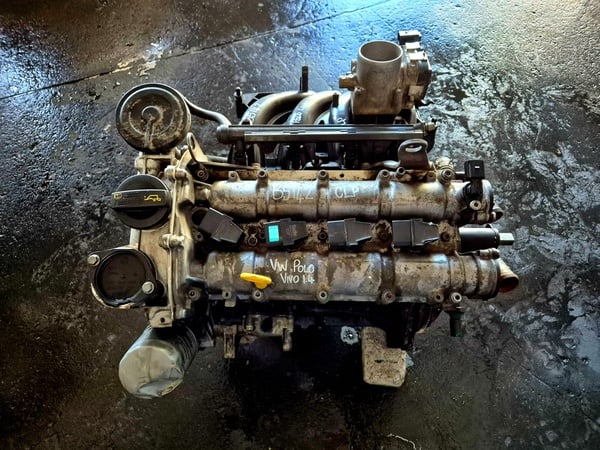Maintain smooth operations with a properly serviced clp engine.
Just How a Clp Engine Can Improve Efficiency in Various Industries
The introduction of CLP engines marks a considerable change in operational efficiency throughout numerous markets, driven by their capacity to maximize fuel usage and lessen downtime. As organizations increasingly prioritize sustainability along with performance, the function of CLP engines comes to be also much more crucial.
Introduction of CLP Engines
CLP engines, or Constant Liquid Propellant engines, stand for a considerable innovation in propulsion technology, especially for room applications. These engines use a continuous feed system that enables the continual expulsion of propellant, leading to boosted efficiency and efficiency compared to traditional solid or hybrid propulsion systems. By keeping a continuous circulation of liquid propellant, CLP engines can accomplish more exact thrust control, which is vital for maneuvering spacecraft in different objective circumstances.
The style of CLP engines incorporates sophisticated products and ingenious gas administration systems. clp engine. This causes lowered weight and increased dependability, crucial aspects for long-duration room objectives. The constant operation lessens the threat of combustion instability, a common difficulty in standard rocket engines.

Benefits in Manufacturing
The manufacturing of Continual Liquid Propellant (CLP) engines provides numerous notable advantages that enhance both performance and cost-effectiveness. Among the primary advantages is the structured manufacturing procedure, which lowers the intricacy connected with typical propulsion systems. By using fluid propellant, producers can achieve greater accuracy in engine performance, resulting in enhanced energy outcome and lowered waste.
Furthermore, CLP engines help with a greater degree of modularity, allowing for much easier assimilation right into various production lines. This adaptability can significantly decrease lead times and boost general operational versatility. Making use of CLP technology also has a tendency to minimize the demand for extensive maintenance as a result of fewer relocating parts, which translates right into reduced downtime and operational costs.

Applications in Logistics
Leveraging Continuous Fluid Propellant (CLP) engines in logistics offers considerable benefits in functional efficiency and dependability. These engines provide a durable option for different transportation requirements, making it possible for the smooth motion of goods across huge ranges. The integral layout of CLP engines enables regular power outcome, which translates into smoother and a lot more predictable transport timetables.
One of the essential applications of CLP engines in logistics remains in heavy-duty products transportation, where they can drive both ground and aerial lorries. Their capacity to preserve high efficiency under varying tons problems guarantees that delivery timelines are fulfilled, therefore enhancing customer contentment. In addition, CLP engines can be incorporated into automated logistics systems, assisting in real-time monitoring and enhancing route planning.
Moreover, the durability of CLP engines decreases upkeep downtime, permitting logistics business to optimize their operational abilities. This is especially valuable in warehousing operations, where performance in handling and carrying items is critical. As logistics remains to develop, the combination of CLP find out here now engines represents a forward-thinking technique that not only enhances performance yet likewise supports the industry's expanding needs for reliability and speed.
Effect on Power Effectiveness
Exactly How do Constant Fluid Propellant (CLP) engines boost power performance in transport? CLP engines make use of a constant flow of liquid fuel, optimizing combustion processes and keeping a steady thrust result. This layout lessens energy losses linked with typical combustion engines, where gas delivery can differ and bring about ineffectiveness.
The continuous procedure of CLP engines enables for a much more effective thermal cycle, causing greater details impulse contrasted to traditional engines. clp engine. This equates to reduced fuel usage for the very same quantity of job done, substantially reducing operational prices across various transportation markets, including aviation and maritime sectors
Additionally, the capacity of CLP engines to maintain optimum efficiency under varying load conditions decreases the need for regular acceleration and slowdown, additionally improving fuel performance. Improved power performance not just adds to cost financial savings but likewise causes lower greenhouse gas discharges, lining up with international sustainability goals.
Future Trends and Innovations
Arising improvements in Continuous Fluid Propellant (CLP) engine innovation assurance to reinvent the landscape of transport effectiveness and sustainability. As his response sectors pivot toward greener choices, CLP engines stand at the leading edge, integrating ingenious materials and style techniques that boost efficiency while minimizing ecological impact.
One of the most promising patterns is the adoption of crossbreed systems that incorporate CLP engines with renewable resource sources. This synergy can optimize fuel consumption and lower discharges, straightening with global sustainability goals. Moreover, improvements in computational liquid characteristics (CFD) are facilitating the layout of even more aerodynamically effective engines, resulting in minimized drag and boosted fuel effectiveness.
Additionally, the advancement of smart surveillance systems is readied to enhance functional effectiveness. These systems utilize information analytics and IoT technology to maximize engine efficiency in real-time, making sure that the engines operate within their most effective criteria.
As research remains to check out alternative propellant solutions-- such as biofuels and synthetic fuels-- the future of CLP engines looks appealing. By utilizing these technologies, sectors can not just boost their efficiency yet also add significantly to a cleaner, more lasting future in transport.
Conclusion
In verdict, CLP engines represent a significant improvement in effectiveness throughout several markets. Their capability to enhance fuel intake and minimize functional prices, combined with a continual feed system, enhances power result and operational integrity. The integration of innovative materials and less moving parts minimizes maintenance requirements, while alignment with sustainability goals settings CLP engines as a pivotal modern technology for the future. Proceeded technology in this field promises additional enhancements in performance and ecological performance.